Out of sight, out of mind. That is how most of us want to think about the trash we generate. But as our cities become increasingly overwhelmed with the burden of refuse collection and disposal, we must refocus the way we view our discards and devote greater attention to the value and importance of waste management. Only by seeing waste as a resource, and understanding its potential, can we help accelerate the building of better systems for disposing and reusing the things we throw out.
Garbage is a natural product of development and urbanization. The world’s cities produced 1.3 billion metric tonnes (286.6 trillion pounds) of trash in 2012, according to a World Bank report on global solid waste management. By 2025, that figure is expected to reach 2.2 billion tonnes (485 trillion pounds) per year. Municipal solid waste already overwhelms city budgets, especially in the developing world, and it is expected to grow even faster than the rate of urbanization.
Trash carries many names in English. Garbage, rubbish, refuse, waste, detritus, debris, discard, litter, junk, and scraps are some examples. Whatever we call it, we tend to have a single prevailing attitude towards trash: get rid of it, preferably with minimal muss, fuss, or stink. And while we may be willing to sort recyclables and deposit them in special bins, we generally give little thought to where our discards go or what happens to them. Just consider: how often have you visited a municipal waste site or recycling center?
For the health of our people and planet, however, we do need to devote more thought to garbage—how to reduce it and where it ends up. We need to move beyond the “yuck” factor and stop expecting others to take care of our rubbish for us. We must re-think what trash is, and get behind the solutions that tap its potential uses and benefits to push for better waste management across both the developed and developing worlds.
Let’s start by considering the multiple facets of city garbage.
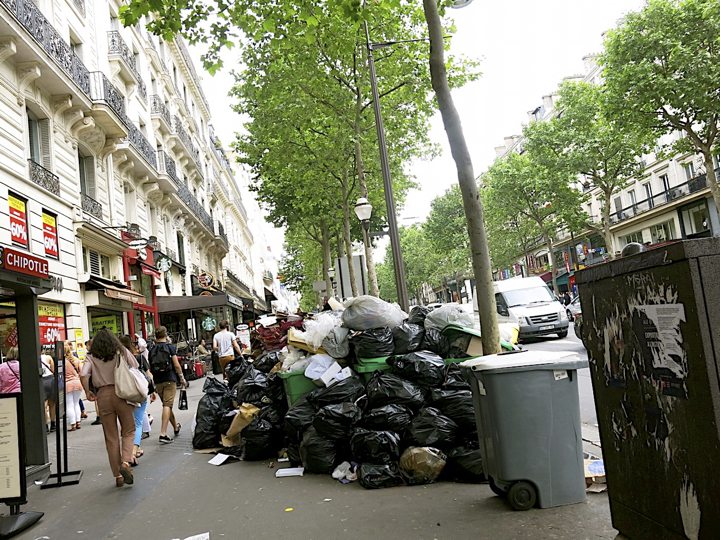
What the stink is about
Yes, common garbage is not attractive. Thrown in with other trash, most discarded objects quickly become slimy, grimy, and smelly. If you live in a city with good trash collection and recycling, the stink and ugliness are minimized and quickly whisked from view.
But sometimes, even that falls apart. I was in Paris in the spring of 2016, when the city’s public garbage collectors went on strike for nearly two weeks—in a city where residential garbage is normally collected daily. The result was a mess. Despite considerable progress in getting people to sort refuse from recyclables, collection bins were overflowing and oozing with sludge. The usually welcoming sidewalks of areas such as the Latin Quarter were blocked with heaping garbage piles, greatly frustrating locals and visitors alike. [Note: half the city’s districts are serviced by private trash collection companies. Those neighborhoods remained clear of garbage, and the city ultimately paid the private companies to pick up the refuse left by the public sector collectors until the strike was resolved.]
I live in Nairobi, Kenya, where municipal garbage collection is largely nonexistent. In our compound, we pay a monthly fee to a private company that collects our rubbish (one bag maximum, twice a week) and presumably disposes of it properly.
But not everyone can afford or is willing to pay for private trash collection. Less than half of households in Nairobi subscribe to such a service. Instead, many people burn their rubbish, filling the air with smoke and fumes. Others simply toss their trash on the ground, as evidenced by the large amounts of litter across the city.

Poor neighborhoods suffer the most from waste management neglect and are filled with piles of rubbish, including so-called “flying toilets” (plastic bags of human waste tossed in with the rest).
What garbage is picked up is supposed to go to collection centers and ultimately end up in the city’s Dandora dumpsite. But factors such as graft, political turf wars, and scrabbles over lucrative waste disposal contracts mean that trash is often dumped in unauthorized locations or left to rot in place along city streets and alleys. Those trucks that do make it to Dandora face an access road that gets washed out during heavy rains and gangs that demand small bribes to offload the garbage.
Dandora covers 30 acres and was designed to hold 500,000 metric tonnes of trash, though it is said to contain some 1.8 million tonnes. The refuse is not properly contained and ends up leaching into the land and water that flows into the Nairobi River.
Plans to open a new 1,500-acre dumpsite on the outskirts of Nairobi have been discussed for years, but they are stalled because the land is situated directly beneath the flight path of Nairobi’s Jomo Kenyatta International Airport. Dumps attract birds, which could pose a serious aviation safety risk. After all, it was engine failures due to bird collisions that forced Captain Chesley “Sully” Sullenberger to land U.S. Airways Flight 1549 on New York’s Hudson River.
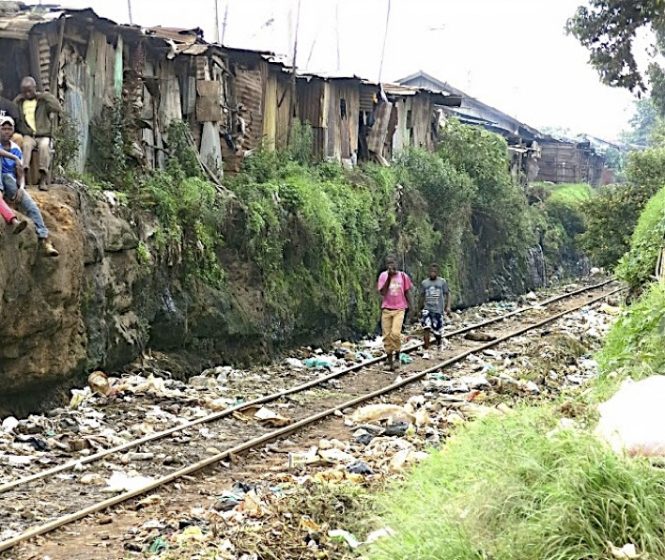
Open dumps are used all over the world. They present major health and environmental risks, especially in heavily populated areas. Hazards include microbial pathogens, toxic chemicals, noxious fumes, and heavy metals that can contaminate soil, air, and groundwater.
When garbage smells…like money and jobs
For all the stink and risks, garbage also has its positive sides.
Waste management is a huge business worldwide. In the U.S. alone, the collection and disposal of non-hazardous solid waste is a $52 billion industry. From curbside pickup through specialized trucks and sorting, all the way to landfills and incinerators, there is money to be made along the garbage collection and disposal continuum. Large companies such as Waste Management, Republic Services, and Veolia dominate, but there are many smaller companies taking care of waste collection, treatment, and disposal, too. In the U.S., they number more than 25,000.
Garbage also creates jobs, both formally and informally. Millions are employed in formal garbage management, and recycling has been adding jobs at a rate of 7 percent per year in the European Union and is expected to create 1.1 million new positions by 2030 in the U.S., according to the EcoCycle website. The numbers of informal waste-pickers—people who live off what they find and sell from garbage bins and piles—is estimated to be 15-20 million globally. Their work is often dirty and dangerous, as it exposes them to hazards, pathogens, contaminants, and crime related to turf wars over trash sources. But, informal waste-picking offers a source of cash and employment to people who are often desperately poor. In Kenya, 43.4 percent of the population lives on less than $1.25/day. Scavengers picking through the garbage mounds of Dandora might make up to $2.50/day collecting metals, rubber, plastics, electronics, and even meat bones—a pittance, yes, but an important form of income generation nonetheless.
Examples abound of cases in which the informal sector has organized to create safer and more sustainable ways of participating in waste management, thereby allowing people in this sector to play a considerable role in garbage collection and the recovery/reuse of recyclable materials, according to the United National Environment Programme (or UNEP). In Lusaka, Zambia, for example, the informal sector accounts for 30 percent of waste collection, and UN Habitat estimates that as much as 60 percent of urban jobs there are associated with trash collection, sorting, recovery, and disposal.
In the slums of Nairobi, community-based organizations are spearheading efforts to make trash collection and the recovery of usable materials into businesses that serve as a source of employment and empowerment for local residents. For example, the Matare Environmental Youth Group (or MEYG) employs young community members to collect garbage near their homes in one of city’s largest slums. They pick up household waste once a week for a monthly fee of 150 Kenya Shillings (U.S. $1.50) and take it to a designated site to be collected by municipal services. [Note: though the city services often fail to do their part, the effort removes trash from where people live, and has improved community cleanliness and security, according to locals.]
MEYG also has reclaimed formerly trash-ridden spots in the neighborhood to create public spaces for sports and other social activities. It has developed a recycling program that pays youth to collect plastics, which they then process for industrial use. Members note that MEYG has changed how local residents handle garbage, has reduced litter, and has created a forum to engage youth and foment community leaders.
While making such programs financially sustainable is a challenge, there are strong arguments for using public or donor subsidies to keep them alive. The costs and benefits are hard to monetize, but the contributions of these programs include such key public goods as improved health, cleaner environments, job creation, leadership development, and reduced crime; these need to be weighed against the price that comes with a lack of action. As noted by UNEP:
“The economic costs of not addressing waste management problems in developing countries are difficult to quantify, but the available evidence suggests that they greatly exceed the financial costs of environmentally sound waste management. So action on waste management is an urgent political priority—waiting for better evidence is no excuse.”
—The Global Waste Management Outlook, UNEP, 2015
Informal groups and micro-enterprises have formed agreements with municipal authorities to deliver waste management services in places as diverse as Uganda, Colombia, Brazil, the Balkans, and southern Asia. They demonstrate that “decentralized and community-based, small-scale facilities can provide a viable and affordable alternative to municipal services,” according to UNEP. Here is an example from Bangladesh:
Waste Concern, an NGO in Bangladesh, has developed a model for such facilities, which are called Integrated Resource Recovery Centers (IRRCs). Waste Concern’s model uses simple technology based on source separation of organic waste. It is low cost, and it recovers value from waste by converting organic waste into compost and valorizing recyclable materials, while providing livelihood opportunities to the urban poor. With assistance from the United Nations Economic and Social Commission for Asia and the Pacific (UNESCAP), the model has been replicated across secondary cities and towns in several countries. In Matale, Sri Lanka, for example, three neighborhood-based plants have been installed with a combined capacity of 9 tonnes of organic waste and 3 tonnes of recyclables a day, thus treating a major portion of waste generated by the town and creating employment for 20 urban poor.”
—The Global Waste Management Outlook, UNEP, 2015
When trash is power
When garbage decomposes, it releases gases like methane, which is flammable, explosive, and a potent greenhouse gas. However, if properly captured, the gas can be converted into energy for powering vehicles, businesses, and homes. Likewise, incineration of garbage can be used to create energy, and organic waste can be converted to biofuel.
Indeed, all over the world, companies have set up operations to capture the waste-to-energy potential of modern landfills. For example, Southern California Edison and the Los Angeles Department of Water and Power fuel the City of Industry hotel and convention center complex using processed landfill gas. The Isséane Recycling Centre and Energy from Waste plant near Paris, France converts more than 460,000 tons of household trash per year into enough electricity and heat to serve 79,000 houses and apartments. With 32 waste-to-energy plants around the country, Sweden is so successful at converting its trash to power that it actually imports garbage from other countries. The plants generate enough power to heat 950,000 homes and provide electricity for 260,000 households. China has some 50 plants converting trash to energy, and Japan converts 30 million tons of municipal solid waste into power annually. Other examples of countries with waste-to-energy facilities include Austria, the U.K., Canada, Sri Lanka, Thailand, and India.
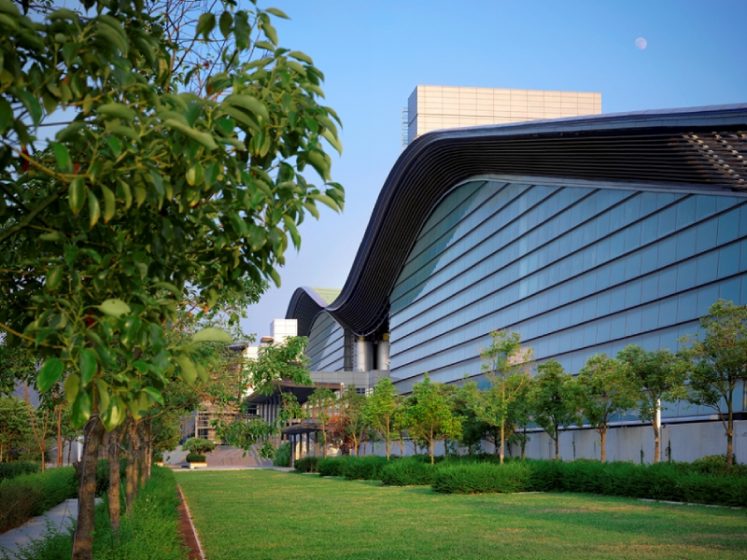
Similar efforts are converting sewage waste into energy. Hong Kong has a plant called T-Park that treats 1,200 tonnes of sludge each day, using the steam generated from the incineration process to create enough energy to power both the facility and an additional 4,000 households. Previously, all the city’s sludge was disposed of in landfills, but now, the plant’s modern incineration system has reduced that volume by 90 percent.
A further effort to relieve Hong Kong’s municipal waste load involves the construction of the city’s first electronics recycling facility, which is meant to process some 30,000 tonnes of discarded computers, TVs, air conditioners, and refrigerators each year. The plant will be built with government funding, but will operate under a “polluters pay” scheme that charges disposal fees to electronics importers and distributers.
Why trash talk and trashy thoughts can be a good thing
Hong Kong’s T-Park is doing far more than converting waste to power. It is also introducing a novel approach to public outreach aimed at turning common perceptions of waste on their heads. Instead of being the type of place people want to avoid, T-Park has deliberately developed educational and recreational facilities designed to lure people to its waste treatment site. It is housed in a modern glass building with beautiful spaces and views of the harbor. It features a spa with three pools (hot, warm, cold), a roof garden, a second garden on the ground, and a wetland habitat that attracts a wide range of birds, insects, and amphibians.
T-Park also offers guided tours, an education center, a theater, and a gallery, all of which teach people about the plant’s processes. Exhibits focus on sewage treatment and waste reduction, encouraging visitors to deepen their efforts to conserve energy, to produce less waste, and to promote recycling. To further support the facility’s green theme, the education areas and café are equipped with environmentally-friendly furniture and utensils.
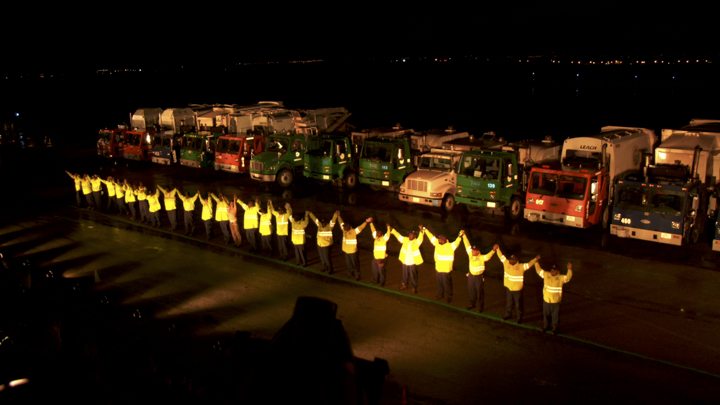
While T-Park is turning the sewage treatment process into a major urban green space, a highly innovative artistic production used the medium of dance to convey the hidden beauty and grace of municipal trash collection. The show, called Trash Dance, was the brainchild of choreographer Allison Orr. Orr spent nearly a year following municipal sanitation workers around Austin, Texas on their daily rounds, talking about their work and their lives. When she first proposed to involve them in an artistic production, they were skeptical. But over time she convinced them that the cadence and movements that they saw as a routine part of their work could be construed as dance, if they were just looked at from a different perspective.
The show was only performed once, on an abandoned airstrip outside of Austin. It received great accolades from the hundreds of people who came out in the rain to watch. Fortunately, the show’s preparation and performance were captured in a film by Andrew Garisson. Also called Trash Dance, the movie garnered numerous awards, including a special jury recognition at the 2012 South By Southwest (SXSW) festival.
Orr’s show is transformative, and it captures the kind of change that will be needed in public attitudes towards the garbage we generate.
Indeed, trash talk is going to have to adopt a new definition—one that includes widespread conversations about the value to be derived from our daily discards. Trash talk needs to become part of our development discourse, and to serve as a basis for new attitudes and behaviors around trash management. The shift may not be easy. But it’s the alternative—inaction—that will really stink, both for our cities and our futures.
Valerie Gwinner
Nairobi
Further resources
Kasozi A, von Blottnitz H. Solid Waste Management in Nairobi: A Situation Analysis – Technical Document accompanying the Integrated Solid Waste Management Plan. Environmental & Process Systems Engineering Group, University of Cape Town. 2010.
T-Park website: https://www.tpark.hk/en/
Trash Dance website: http://trashdancemovie.com/
UNEP. Municipal solid waste: Is it garbage or gold? http://na.unep.net/geas/getUNEPPageWithArticleIDScript.php?article_id=105
UN-Habitat. Solid Waste Management in the World’s Cities: Waste and Sanitation in the World’s Cities, 2010. http://unhabitat.org/books/solid-waste-management-in-the-worlds-cities-water-and-sanitation-in-the-worlds-cities-2010-2/
UN-Habitat. The challenge of slums: Global report on human settlements. London: Earthscan. 2003. http://mirror.unhabitat.org/pmss/listItemDetails.aspx?publicationID=1156
Vesterhus, T. Youth Led Development: A Case Study From the Mathare Slum, Kenya. 2015. UN-Habitat. https://issuu.com/unhabitatyouthunit/docs/youth_led_development_mathare_slum
World Bank. What a Waste: A Global Review of Solid Waste Management . World Bank Report. http://web.worldbank.org/WBSITE/EXTERNAL/TOPICS/EXTURBANDEVELOPMENT/0,,contentMDK:23172887~pagePK:210058~piPK:210062~theSitePK:337178,00.html

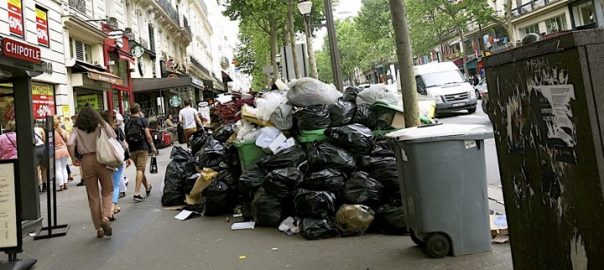






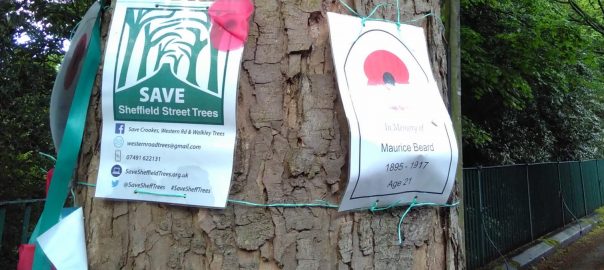

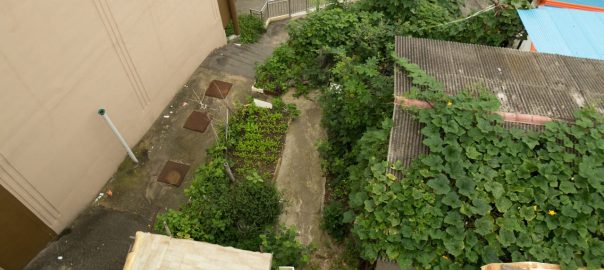
Add a Comment
Join our conversation